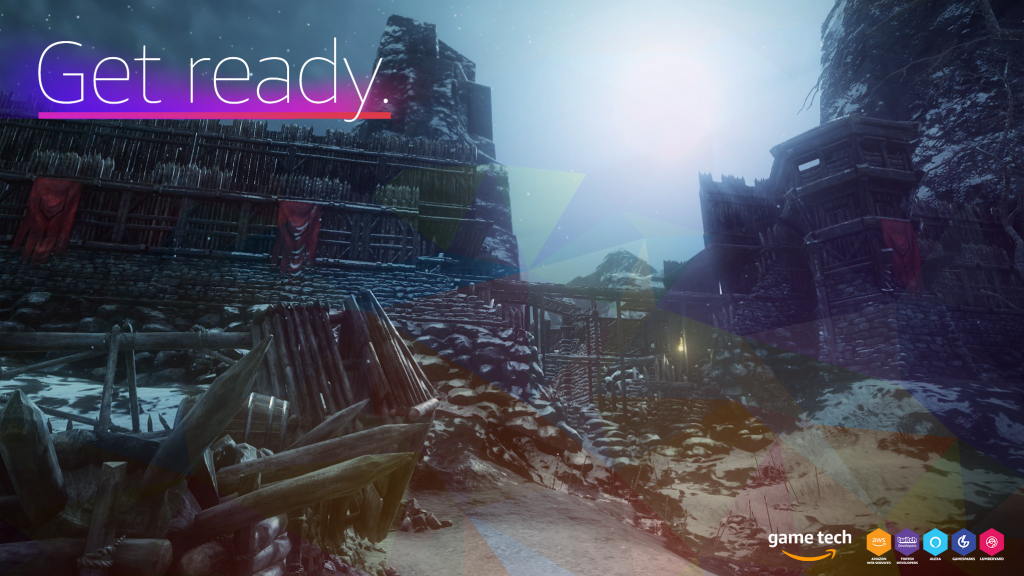AWS for Games Blog
Fortnite + Motorcycles + Broomball + Pub Crawl = Why this year’s re:Invent is a game changer.
The Fortnite Gaming Alcove, Harley ride, Broomball competition, Pub Crawl, and the 8K Run. These are just some of the experiences you’ll get to participant in as the largest global cloud computing conference descends on Las Vegas from November 26 – 30. And for those joining us online, be sure to follow Amazon Game Tech […]
Break Through on Twitch with the New GameOn Tournament Organizer
Post by Michael Harbut, Amazon GameOn In March, we launched Amazon GameOn, a cross-platform competitive gaming service for developers. Today, we added a new feature – the GameOn Tournament Organizer. GameOn Tournament Organizer is a Twitch extension that allows Twitch creators to generate tournaments inside the Twitch experience with a click of a mouse and invite […]
Case Study: Mindstorm Increases Word Fiend’s ARPPU by 500% with GameOn
Word Fiends is a fast-paced word game where you can challenge your friends or random players to find as many words as possible in two-minute online challenges. Mindstorm, the game’s creator, wanted to add a competitive element to the word game, a genre traditionally filled with casual experiences, to increase retention and engagement. To do […]
New Cloud Gems in Lumberyard Beta 1.15 — Available Now
Download Lumberyard Beta 1.15 here Thanks to your feedback, we’ve added over 270 improvements in Lumberyard Beta 1.15. With this release, we’re focusing on how Lumberyard’s integration with AWS enables game developers of all sizes to connect their games and accelerate game development. Lumberyard Cloud Gems make it easy to build popular cloud-connected features using […]
How would you keep 125 million gamers playing smoothly online? Epic Games shares its Fortnite story.
Fortnite creators Epic Games goes all-in on AWS services, as revealed at the AWS Summit at the Javits Center in New York on 7/17/2018. Imagine your game had 125 million players. 125 million. That’s 15 times the size of New York. All those people playing your multiplayer game would be a dream come true, right? […]
Pain in the Asset Library: How Machine Learning can make your production pipeline 1000x faster
Finding related textures in a texture library can be a black hole of wasted time. Using Amazon Rekognition, Amazon’s machine learning API, you can tag your textures and do searches to find them in seconds… In game development, we commonly have a large asset library of textures or scenes that become our “painter’s palette”. This […]
Major updates come to Script Canvas with Lumberyard Beta 1.14 – Available Now
Our push to improve and optimize new systems in Lumberyard continues today with the release of Lumberyard Beta 1.14. Fans of visual scripting, this release is especially for you… Download Lumberyard Beta 1.14 here With over 200 updates in this release, we’re excited to roll out improvements and features that continue to help customers build […]
Get Autoscaling Right the First Time with Amazon GameLift Target Tracking
No one likes paying for things they don’t use – and server capacity is no different. Typical multiplayer games use only 50% of their peak server capacity on average, meaning that half of the time the game servers have no active players. To reduce wasted capacity and costs, Amazon GameLift can automatically turn off game […]
Behind the scenes with Axis Animation
We call Amazon Lumberyard a game engine, but in fact, its real-time rendering technology also opens it up to other creative projects beyond game development. Take animation, for example. Lumberyard has the tools you need to generate film-quality animations, with the ability to tweak details like lighting, cameras, and layout in the editor all in […]
Large-scale, hi-fidelity terrain generation in minutes (not days) with Lumberyard and AWS
Even with a high-end PC, large-scale terrain generation can take developers over a day to complete. But with Lumberyard and its AWS cloud integration, you can achieve this (and other computation-heavy processes) in as little 10 minutes. Watch Mark Biales show us how in this GDC classroom session:









